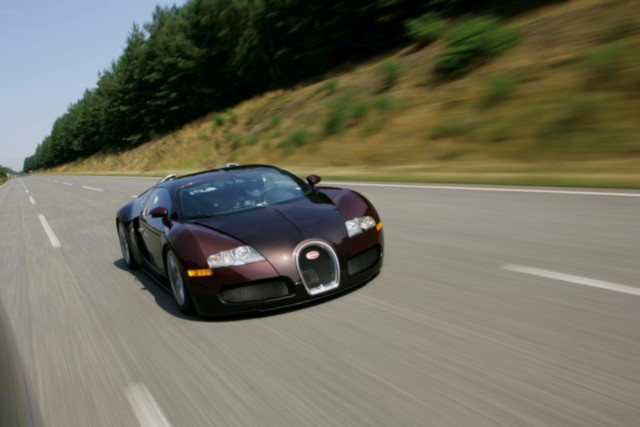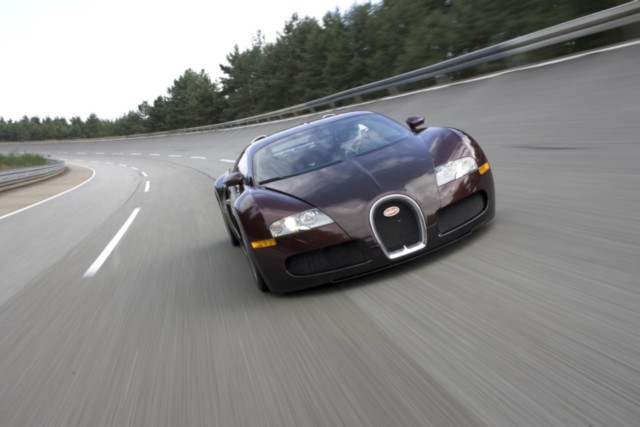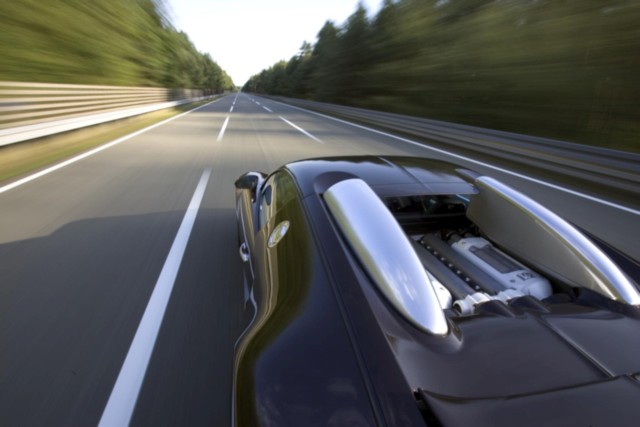Exactly 15 years ago, the books were updated as the Bugatti Veyron speed record was set making it the first series-production, road car to break the 400-km/h barrier.

A top speed of 407 km/h with a series production car would be almost unimaginable if it had not already been done. When it was done, it was something that had never been achieved before. Exactly 15 years ago, Bugatti were the first series car manufacturer to achieve this record with the Veyron 16.4. The French luxury manufacturers of hyper sports cars had achieved a development goal they had set for themselves; something that the public believed to be unachievable.
The Bugatti Veyron speed record needed something really special. Thus, there came the first hypercar designed for a power output of over 1,000 hp, to accelerate from 0 to 100 km/h in less than 3 seconds, and to get up to a speed higher than 406 km/h. The Veyron was powered by an engine developed completely from scratch: almost like fusing two V8 engines together, there came the W16 with 16 cylinders, with a displacement of 8.0 litres, and four turbochargers. The resultant output was 1,001 hp output and 1,250 Nm of torque which were distributed by a newly developed, seven-speed, dual-clutch, automatic gearbox called the DirectShift Gearbox (DSG) to a permanent all-wheel drive.

The Bugatti Veyron 16.4 accelerated from 0 to 100 km/h in 2.5 seconds. No other series production vehicle could accelerate that fast back in 2005. The hypercar reached a speed of 200 km/h in 7.3 seconds, and 300 km/h in 16.7 seconds. However, the main development goal was the top speed of 407 km/h. No other series production vehicle had been able to break the magical 400 km/h barrier before. The ingenious engineer and the driving force behind Bugatti, Ferdinand Karl Piëch, also developed the legendary Porsche 917. That legendary racing car went on to win the 24 Hours of Le Mans for the first time for Porsche in the 1960s and got up to a top speed of 406 km/h on the Hunaudières Straight – and the Veyron was supposed to go even faster.
When the runs were done Ehra-Lessien, Volkswagen’s private test facility, the top speed would only be possible on the straight, which was eight kilometres long. The speed was measured precisely in both directions of the high-speed track using a precision measuring system by the testing organisation “TÜV Süd” who were on site. Several times, the Veyron reached over 408 km/h. In the end, the value entered in the type approval documents was 407 km/h.

Stephan Winkelmann, President of Bugatti, said, “Bugatti has been at the pinnacle of automotive engineering for over 110 years. With the Veyron 16.4, Bugatti not only unveiled what can be called the world’s first hyper sports car in 2005, but also achieved an unbelievable speed record. Even 15 years after the record, it is still a car of sheer power, speed and elegance in a timeless design. An icon of automotive history. I have the greatest respect for the achievement, courage and willpower of the team back then. They really did create an extraordinary car.”
With the Bugatti Veyron, all output figures needed comma separators and the Bugatti Veyron Super Sport that followed, was no different. It had 1,200 hp and 1,500 Nm and went on to 431 km/h.
The next project after the Bugatti Veyron speed record was even more intense. The Bugatti Chiron. A reworked engine meant two-stage twin-turbocharging from the four new turbos and even more power – 1,500 hp and 1,600 Nm – and went on to be the next big thing, with a top speed electronically limited to 420 km/h. However, Bugatti weren’t done and it wasn’t the last speed record they would break. In 2019, Bugatti became the first manufacturer to exceed the 300-mph (483-km/h) mark with the latest Chiron Super Sport 300+. Bugatti set a new speed record at 304.773 mph (490.484 km/h); never before has a vehicle by a series-production manufacturer reached such speeds. Who knew then what the Bugatti Veyron speed record started?



















Leave a Reply